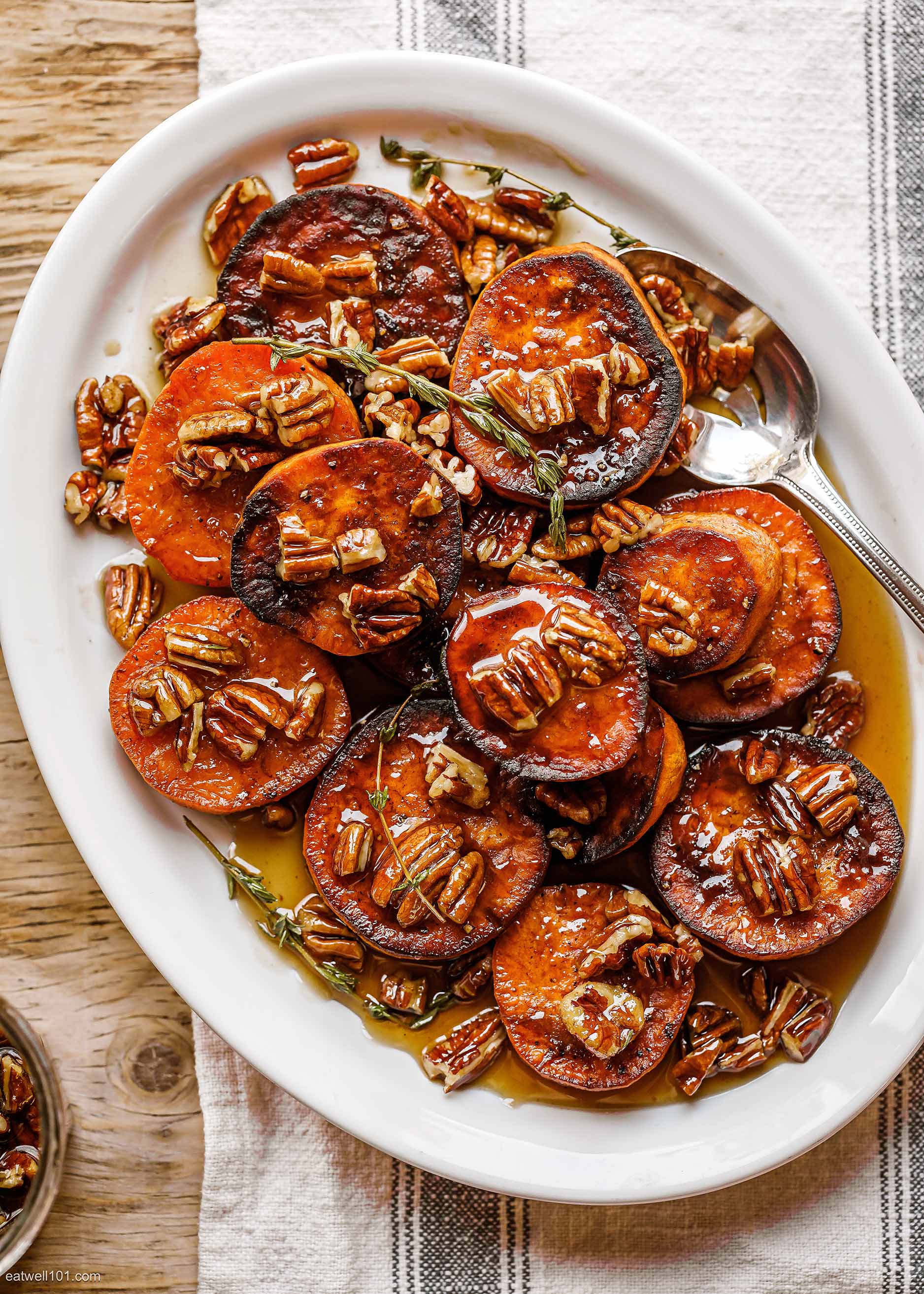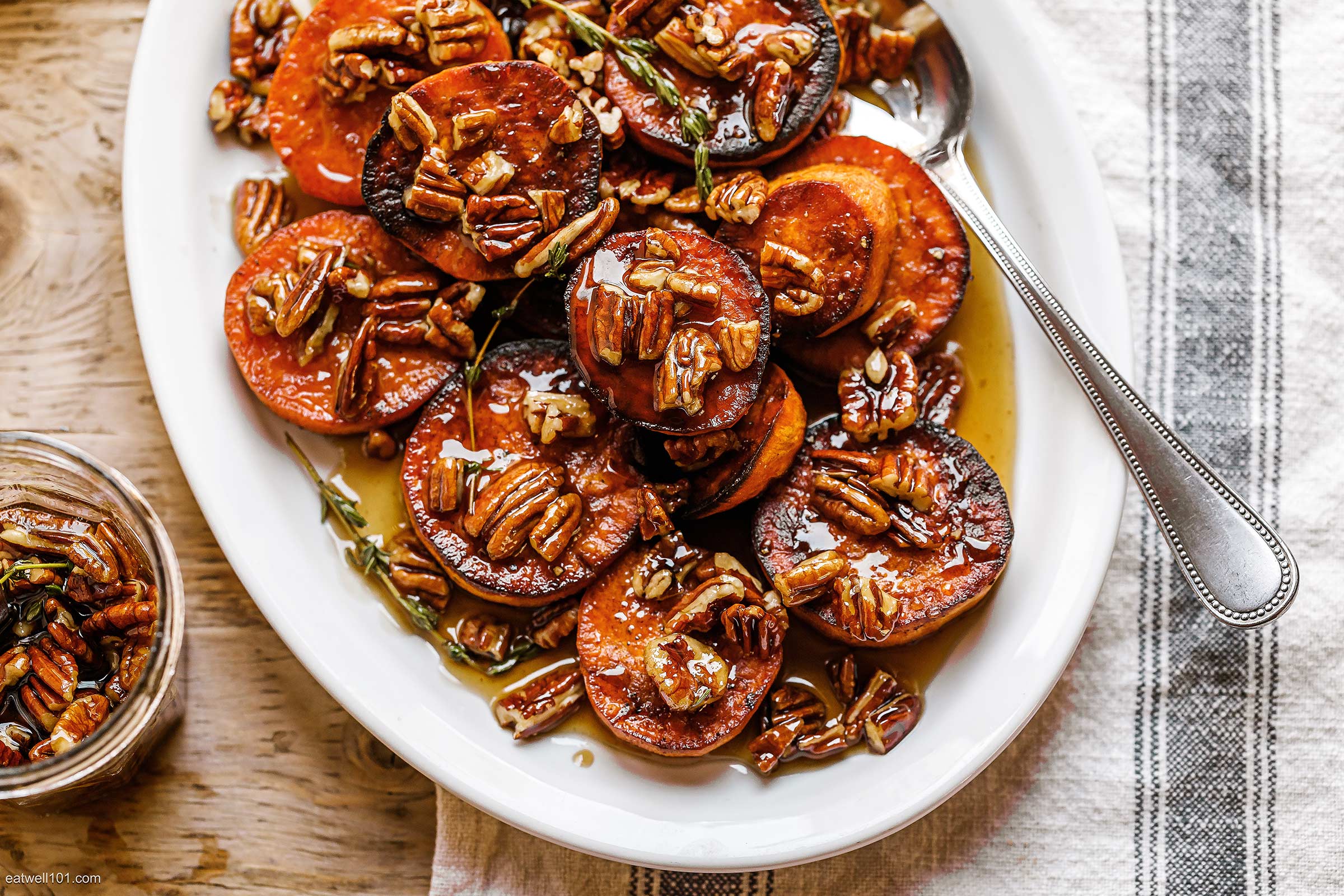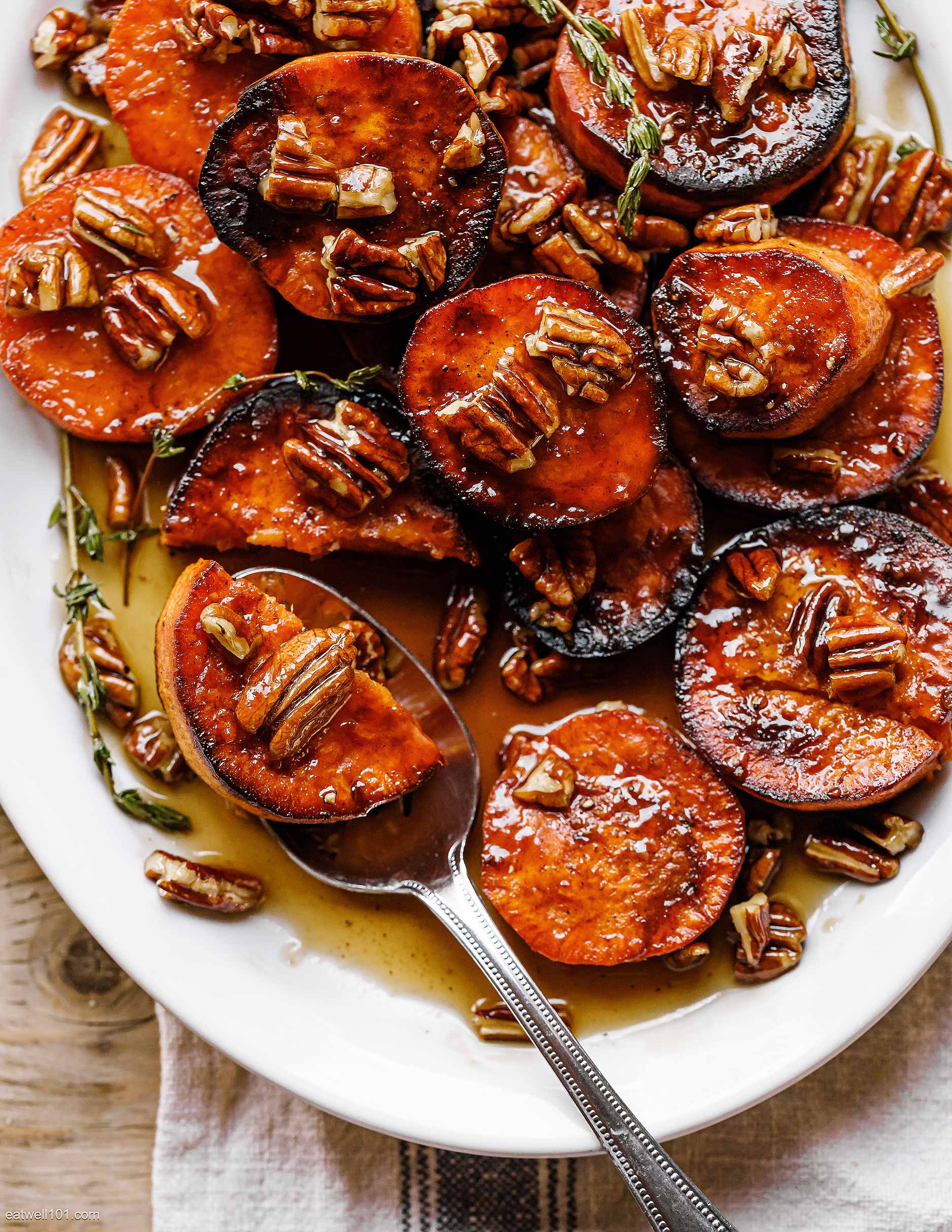
A Taste of Tradition: Native American Roasted Sweet Potatoes with Pecans and Maple
The aroma of roasting sweet potatoes, mingled with the earthy crunch of pecans and the sweet embrace of maple syrup, evokes a sense of comfort and heritage. This seemingly simple dish, traditional Native American roasted sweet potatoes with pecans and maple, is far more than just a culinary delight; it’s a testament to the ingenuity, resourcefulness, and deep connection to the land that has defined Indigenous cultures for millennia.
Before the arrival of European settlers, Indigenous peoples across North America cultivated and consumed sweet potatoes, a root vegetable that thrives in warmer climates. While the exact origins of this specific preparation are difficult to pinpoint due to the vast diversity of Native American tribes and their culinary traditions, the core elements speak to a sophisticated understanding of flavor pairings and the utilization of readily available, nourishing ingredients.
Sweet potatoes themselves are nutritional powerhouses, rich in vitamins A and C, fiber, and antioxidants. Their natural sweetness makes them a perfect canvas for both savory and sweet applications. The addition of pecans, a native nut found abundantly in many parts of North America, provides healthy fats, protein, and a delightful textural contrast. Maple syrup, tapped from the sugar maple tree, offered a natural sweetener long before refined sugars became commonplace, its distinctive flavor adding a unique depth that complements the earthy sweetness of the potatoes and the nutty richness of the pecans.

The act of roasting, whether over an open fire or in a rudimentary oven, was a fundamental cooking technique for Native Americans. This method not only tenderized the tough root vegetables but also concentrated their natural sugars, creating a more intense and satisfying flavor. The slow, even heat would have allowed the sweet potatoes to caramelize, developing those irresistible crispy edges and a soft, yielding interior.
Imagine a tribal gathering, perhaps during a harvest festival. Large earthenware pots or carefully constructed earth ovens would be filled with these sweet potatoes, seasoned with whatever herbs and spices were at hand – perhaps wild sage, or even a touch of ground sumac for a tangy counterpoint. As the cooking progressed, the sweet, smoky aroma would waft through the air, drawing people together. The addition of chopped pecans would have been a natural enhancement, providing a welcome crunch and nutty depth. And the drizzle of maple syrup, a precious commodity, would have been reserved for special occasions, elevating the dish to something truly celebratory.
This dish embodies the principles of Indigenous cuisine: a deep respect for ingredients, a focus on seasonality, and a harmonious integration of flavors. It’s a cuisine born not of elaborate recipes and store-bought convenience, but of intimate knowledge of the land and its bounty. The sweet potato, a gift from the earth, transformed by fire and enhanced by the gifts of the forest – the pecans and the maple – represents a complete and nourishing meal, a reflection of the interconnectedness of nature and sustenance.
In contemporary times, this traditional preparation has found a place on many tables, often adapted and refined. While we might now use modern ovens and store-bought maple syrup, the essence of the dish remains the same. It’s a bridge between past and present, a way to connect with a rich culinary heritage and to appreciate the simple yet profound flavors that have sustained communities for generations.
The beauty of this dish lies in its adaptability. While the core ingredients are consistent, variations abound. Some traditions might incorporate a hint of chili powder for a subtle warmth, while others might add dried cranberries for a tart burst of flavor. The type of pecan, whether raw or toasted beforehand, can influence the final texture and depth of nuttiness. And the grade of maple syrup – from a lighter, more delicate amber to a darker, more robust robust – can significantly alter the sweet profile.
Beyond its deliciousness, this dish serves as a powerful reminder of the importance of food sovereignty and cultural preservation. By celebrating and preparing traditional Native American dishes like roasted sweet potatoes with pecans and maple, we honor the resilience and ingenuity of Indigenous peoples. We acknowledge their profound understanding of sustainable agriculture, their innovative cooking techniques, and their deep spiritual connection to the food they produce.
In a world increasingly dominated by processed foods and globalized diets, rediscovering and embracing ancestral culinary traditions offers a pathway to a more mindful and connected way of eating. It encourages us to seek out local, seasonal ingredients, to understand the stories behind our food, and to appreciate the cultural significance of what we consume.
So, the next time you find yourself preparing or enjoying roasted sweet potatoes with pecans and maple, take a moment to reflect on its origins. Think of the hands that first cultivated the sweet potato, the forests that yielded the pecans, and the ancient knowledge that guided the hands that tapped the maple trees. This dish is a delicious invitation to explore a vital part of North American history and a testament to the enduring power of tradition. It’s a taste of the land, a taste of heritage, and a taste of something truly special.

Recipe: Traditional Native American Roasted Sweet Potatoes with Pecans and Maple
This recipe is an interpretation of traditional flavors and techniques, designed to be accessible for modern kitchens.
Yields: 4-6 servings
Prep time: 15 minutes
Cook time: 45-60 minutes
Ingredients:
- 2-3 medium-sized sweet potatoes (about 1.5 – 2 lbs), scrubbed clean
- 1/2 cup pecan halves or pieces
- 2-3 tablespoons pure maple syrup (use a darker grade for a richer flavor)
- 1-2 tablespoons unsalted butter, melted, or coconut oil for a dairy-free option
- 1/4 teaspoon ground cinnamon (optional, but a common addition)
- Pinch of salt
- Freshly ground black pepper, to taste (optional)
Equipment:
- Baking sheet
- Parchment paper (optional, for easier cleanup)
- Sharp knife
- Medium bowl
Instructions:
-
Preheat Oven & Prepare Baking Sheet: Preheat your oven to 400°F (200°C). Line a baking sheet with parchment paper for easier cleanup, if desired.
-
Prepare Sweet Potatoes:
- If you prefer whole roasted sweet potatoes, prick each potato several times with a fork.
- If you prefer them cut into pieces, slice the sweet potatoes into 1-inch cubes or wedges. There’s no need to peel them; the skins are nutritious and add texture.
-
Season Sweet Potatoes:
- Place the prepared sweet potatoes in a medium bowl.
- Drizzle with the melted butter or coconut oil.
- Sprinkle with a pinch of salt and black pepper (if using).
- If using cinnamon, add it now and toss gently to coat the sweet potatoes evenly.
-
First Roast:
- Spread the seasoned sweet potatoes in a single layer on the prepared baking sheet.
- Roast for 25-35 minutes, or until they are beginning to soften and show signs of caramelization. The exact time will depend on the size of your sweet potato pieces.
-
Add Pecans and Maple Syrup:
- Remove the baking sheet from the oven.
- Scatter the pecan halves or pieces over the partially roasted sweet potatoes.
- Drizzle the maple syrup evenly over the sweet potatoes and pecans.
-
Second Roast:
- Return the baking sheet to the oven.
- Continue roasting for another 15-25 minutes, or until the sweet potatoes are tender when pierced with a fork, and the pecans are toasted and fragrant. Keep an eye on the pecans to ensure they don’t burn.
-
Serve:
- Carefully remove the baking sheet from the oven.
- Serve the roasted sweet potatoes warm, ensuring each serving gets a good mix of sweet potato and toasted pecans.
Tips and Variations:
- Spice it Up: For a touch of warmth, add a pinch of cayenne pepper or a dash of chili powder along with the salt and pepper in step 3.
- Herbal Notes: A sprinkle of fresh rosemary or thyme, added during the last 10-15 minutes of roasting, can offer a lovely savory contrast.
- Fruity Addition: Stir in a handful of dried cranberries during the last 5-10 minutes of roasting for a burst of tartness and color.
- Nut Alternatives: While pecans are traditional, walnuts or even sliced almonds can be used as alternatives.
- Make it a Meal: Serve as a side dish to roasted meats or poultry, or as a vegetarian main course with a dollop of plain yogurt or a sprinkle of crumbled goat cheese.
Enjoy this delicious and historically rich dish!


